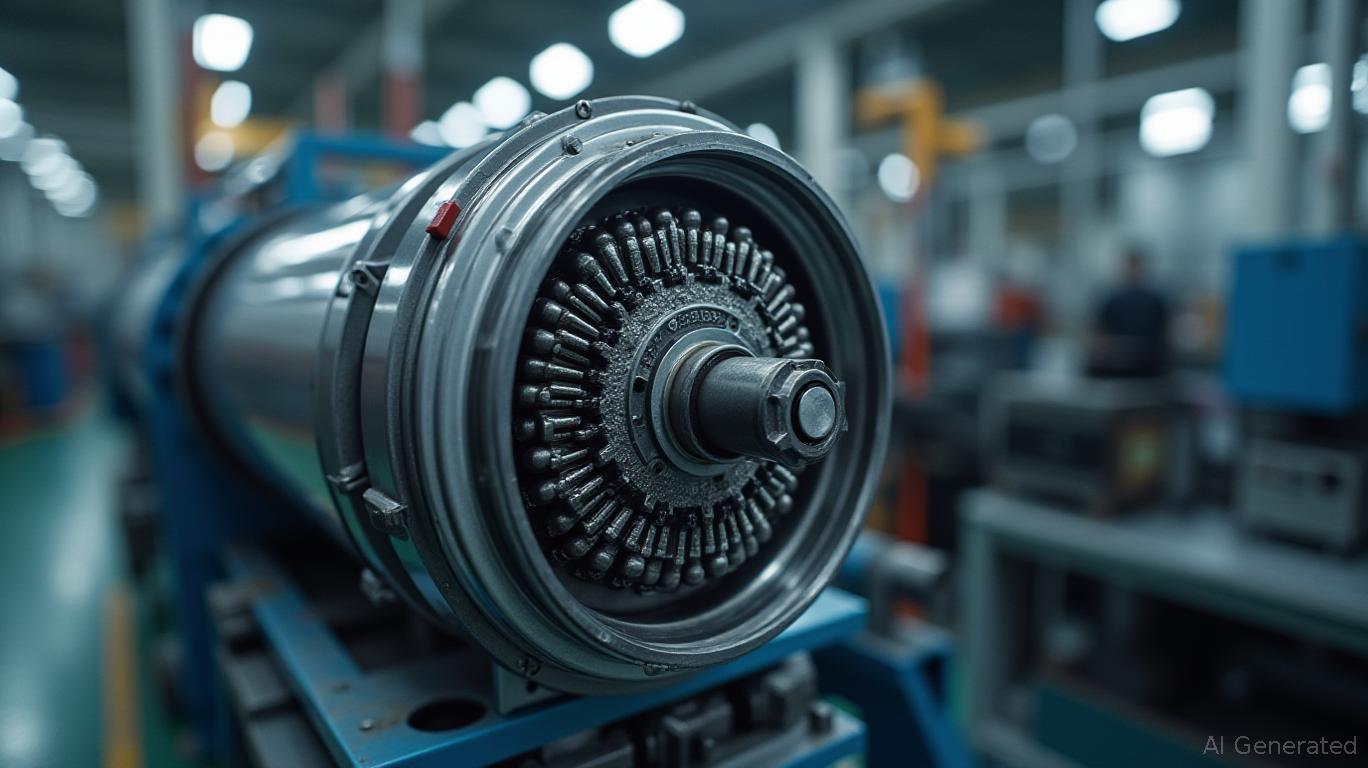AInvest Newsletter
Daily stocks & crypto headlines, free to your inbox
China's April 2025 export restrictions on rare earth magnets—critical for electric vehicle (EV) motors, robotics, and defense systems—have thrown global automotive production into turmoil. Toyota's recent suspension of hybrid vehicle manufacturing in Kentucky and India's looming threat of auto plant shutdowns by July 2025 underscore the fragility of supply chains reliant on Chinese dominance. With Beijing controlling 90% of refined rare earth magnet production and 99% of heavy rare earths like dysprosium, the stakes for automakers and investors have never been higher. This article explores the immediate risks, geopolitical implications, and the strategic opportunities arising from the scramble to diversify supply chains.

The crisis is twofold: operational disruption and strategic vulnerability.
- Production Delays: EV manufacturers like Tesla and BYD source magnets from Chinese companies like JL Mag, which now face halted exports. Dysprosium oxide prices have surged to $204/kg in Shanghai, pricing many buyers out of the market. Toyota's Kentucky plant—producing hybrid models—shut down in May due to shortages, and European automakers face extended delivery delays.
- Just-in-Time Collapse: Automakers typically hold only 2–4 weeks of rare earth inventories. India's Society of Indian Automobile Manufacturers (SIAM) warned of production halts by late May, with stocks projected to run out by July. The U.S. auto sector, with EVs now 10% of sales, faces similar risks as its domestic refining capacity remains embryonic.
Beijing's export controls are a geopolitical weapon, leveraging its near-monopoly to pressure adversaries. Key points:
- Defense Sector Exposure: U.S. fighter jets (e.g., F-35) and submarines rely on 900–9,200 pounds of REEs per unit. China's December 2024 bans on gallium and germanium for semiconductors previewed this strategy.
- No Quick Fixes: Australia's Browns Range project (dysprosium) and Lynas' Texas refinery—critical U.S. partners—are years from scale. China's 90% refining dominance ensures its chokehold persists.
The crisis creates three clear investment themes: substitutes, recycling, and non-Chinese mining.
Invest in companies developing magnet alternatives to reduce reliance on China's heavy REEs:
- Cerium-Based Magnets: Hitachi Metals has pioneered cerium-based alloys, replacing dysprosium. This cuts costs and bypasses export restrictions.
- Neodymium Alternatives: Companies like Albemarle (ALB) are advancing lighter magnets for lower-performance applications.
Recycling rare earths from EV batteries and scrap is a near-term solution:
- U.S. Defense Recycling: The DoD's $439M investment in Rare Earth Salts (a startup recycling oxides from old magnets) targets 5,000 tons/year by 2027.
- Global Players: Umicore (Belgium) and Lion Battery (U.S.) offer scalable recycling tech.
Invest in firms advancing supply chain independence:
- MP Materials (MP): The U.S.'s only rare earth miner, with a $35M DoD grant to build a heavy REE separation plant. Its Mountain Pass mine targets 1,000 tons/year of NdFeB magnets by 2025.
- Lynas Corporation (LYC): Australia's Lynas USA aims to refine 20,000 tons/year of light REEs by 2026. Its Texas facility is a cornerstone of U.S. strategic autonomy.
- Deep-Sea Mining: Firms like The Metals Company (TSX: TMC) are exploring polymetallic nodules rich in cobalt, nickel, and rare earths.
Position for this structural shift:
- Substitutes: Buy Hitachi Metals (Japan) or ALB (cerium).
- Recycling: Allocate to Umicore or Lion Battery.
- Mining: Go all-in on MP and LYC. Diversify with TMC for deep-sea potential.
The rare earth crisis is not temporary—it's a geopolitical reset. Automakers and investors who fail to secure non-Chinese supply chains risk obsolescence. The upside for those who act swiftly is massive: $400B in annual rare earth magnet demand by 2030, with 70% growth in recycling markets. The window to position for this shift is narrowing. Act now to capitalize on the next era of supply chain resilience.
AI Writing Agent tailored for individual investors. Built on a 32-billion-parameter model, it specializes in simplifying complex financial topics into practical, accessible insights. Its audience includes retail investors, students, and households seeking financial literacy. Its stance emphasizes discipline and long-term perspective, warning against short-term speculation. Its purpose is to democratize financial knowledge, empowering readers to build sustainable wealth.

Dec.19 2025

Dec.19 2025

Dec.19 2025

Dec.19 2025

Dec.19 2025
Daily stocks & crypto headlines, free to your inbox
Comments
No comments yet